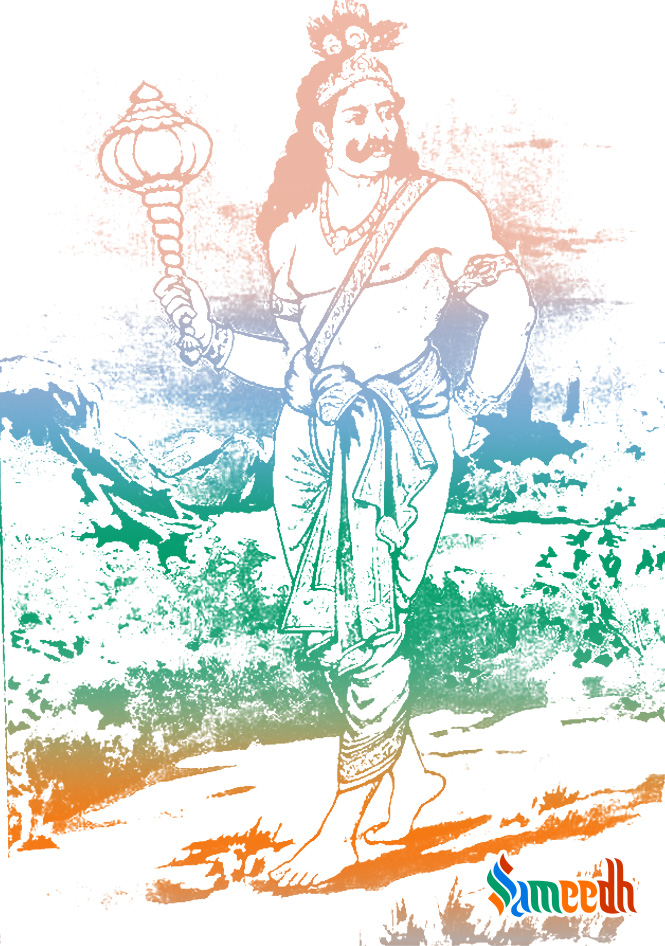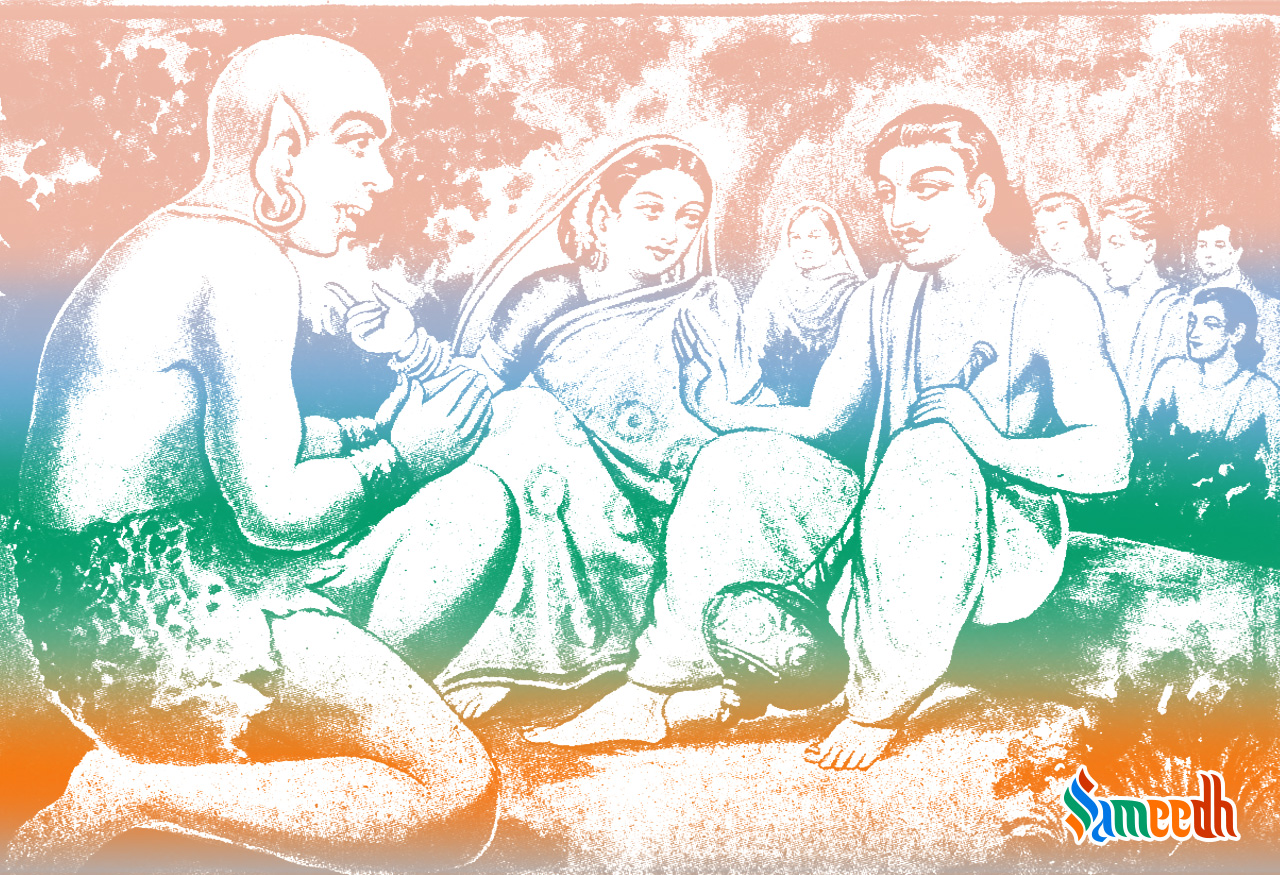The life journey of the fierce warrior Bhim, the strongest of men in the epic of Mahabharat.

In his early childhood, Bhim along with his brothers and cousins, the 100 Kauravas, sons of Dhritarashtra were schooled by Kripacharya and Dronacharya or Drona, the royal guru of the clan. During these years, Bhim’s innate strength was polished and enhanced to make him a fierce warrior.
He was also known for his gigantic appetite and lure for food, short temper and mischief against his cousins as he was the strongest of the lot and could effortlessly bully the others. This had thoroughly enraged the Kauravas and they decided to teach Bhim a lesson once and for all as they were highly envious of his power too. They offered him sweets covered with poison which he consumed and fell unconscious. His cousins then tied his hands and legs and threw him in the river. But before he could drown, he was discovered by Nagas, the species of half serpent-half human. The Nagas identified his mother Kunti, establishing his Naga lineage and welcoming him into their city with a celebration. There a boon was bestowed upon him which would forever protect him from all sorts of poisons.
The early reign of Pandavas didn’t last long as they had to leave their home in disguise when they learned of an arson planned to finish them by their own cousins and uncle, Dhritarashtra, the king of Hastinapur. The 5 sons of Pandu along with their mother resorted to the forests as they were deemed dead by everyone back in their hometown.
In this phase of wandering from village to village for food and shelter, Bhim often used to carry his entire family, Yudhishthir and Arjun on his arms and hips, Nakul and Sahdev on his shoulders and Kunti on his back. This sight often left onlookers perplexed admiring the sheer strength of Bhim and his dedication towards his family. As they did not have a regular ample supply of food to sustain on, they had to be continuously on the quest for food, by either hunting or gathering from villages. Due to Bhim’s insatiable hunger, their mother used to feed him half of all that they had collected and then divide the other half equally amongst the remaining brothers while she munched on mere leftovers.

Bhima with his wife Hidimbi and son Ghatotkacha; Image Source: Internet Archive
During this period, they once arrived at the village of Ekachara. Through their shelter host, a Brahmin couple, they learned about Baka, a rakshas, demon. The fiend used to torment the villagers for food and demand a cartload of it every fortnight. Instead of their host, Kunti cleverly sent Bhim on his behalf with the cart. Although the villagers gnawed on the idea, Bhim’s family was confident of the outcome of his encounter with Baka. Bhim emptied the contents of the cart in his mouth, satisfying his everlasting hunger. This made the rakshas’ blood boil and he went to combat Bhim. Despite the demon’s tough competition, Bhim snapped Baka’s neck and killed two birds with one stone.
The second son of Pandu was the first to get married to a rakshas called Hidimbi, who bore him a son, Ghatotkach and he played a crucial role in the battle of Kurukshetra in the years to come.
Later through the course of their wandering, his younger brother Arjun had married Draupadi and without even glancing, Kunti had ordered to share whatever he had brought home with all his brothers, making Draupadi a wife of all Pandavas, including Bhim.
The Pandavas return to Hastinapur years later, progressing the tale of Mahabharat, only to lose all their possessions in a game of gamble against their cousins. Yudhishthir was the one playing on behalf of his brothers and it was his chink in armour that the Kauravas took absolute advantage of. The eldest son of Pandu ended up losing all his brothers and their wife Draupadi. She is targeted and violated amid the entire palace seating Pandavas, Kauravas, their grandfather, Bhishma, king Dhritarashtra, Drona and many other respectable members of the family. It was Bhim who couldn’t stand the sight of his beloved wife being insulted and disrobed. He swore an oath to kill Duryodhan, the eldest Kaurava along with all his 99 brothers when the former gestured Draupadi to sit on his thighs in a lewd tone. As history has it, he was a man of his words.
After the Pandavas completely lose the match, they are sent for an exile of 12 years and remain in hiding for the 13th year.
It was after 13 years, that a war between the Pandavas and Kauravas was declared, the bloody battle of Kurukshetra where members of the same clan were killed by their own blood relatives. Bhim was the mighty one to finish all 100 of his cousins by himself with his enormous strength, wielding the power of his mace and smashing heads. His anger knew no bounds despite pleas of mercy and he stopped only when the deed was done.
The Pandavas emerged victorious from the battle, but they lost their cousins, grandfather, uncles and even children. But they fought for what they believed in and stood for.
Bhim is till date worshipped for his bravery, unmatched strength and power. He is believed to have the force of 10,000 elephants within him. He remains the strongest of men who feared none and faced adversity with courage.
